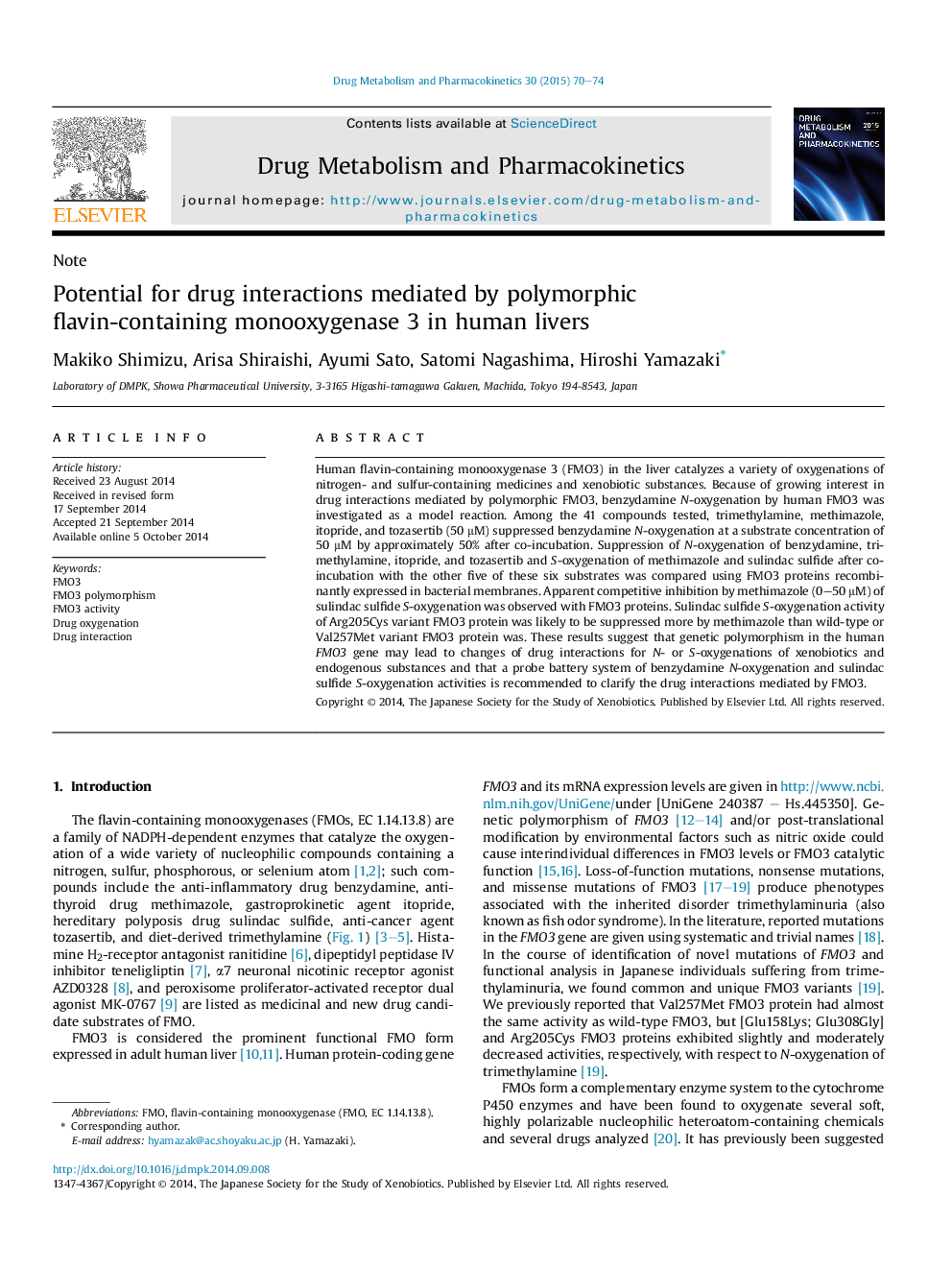| Article ID | Journal | Published Year | Pages | File Type |
|---|---|---|---|---|
| 2478901 | Drug Metabolism and Pharmacokinetics | 2015 | 5 Pages |
Human flavin-containing monooxygenase 3 (FMO3) in the liver catalyzes a variety of oxygenations of nitrogen- and sulfur-containing medicines and xenobiotic substances. Because of growing interest in drug interactions mediated by polymorphic FMO3, benzydamine N-oxygenation by human FMO3 was investigated as a model reaction. Among the 41 compounds tested, trimethylamine, methimazole, itopride, and tozasertib (50 μM) suppressed benzydamine N-oxygenation at a substrate concentration of 50 μM by approximately 50% after co-incubation. Suppression of N-oxygenation of benzydamine, trimethylamine, itopride, and tozasertib and S-oxygenation of methimazole and sulindac sulfide after co-incubation with the other five of these six substrates was compared using FMO3 proteins recombinantly expressed in bacterial membranes. Apparent competitive inhibition by methimazole (0–50 μM) of sulindac sulfide S-oxygenation was observed with FMO3 proteins. Sulindac sulfide S-oxygenation activity of Arg205Cys variant FMO3 protein was likely to be suppressed more by methimazole than wild-type or Val257Met variant FMO3 protein was. These results suggest that genetic polymorphism in the human FMO3 gene may lead to changes of drug interactions for N- or S-oxygenations of xenobiotics and endogenous substances and that a probe battery system of benzydamine N-oxygenation and sulindac sulfide S-oxygenation activities is recommended to clarify the drug interactions mediated by FMO3.
Graphical abstractFigure optionsDownload full-size imageDownload as PowerPoint slide
